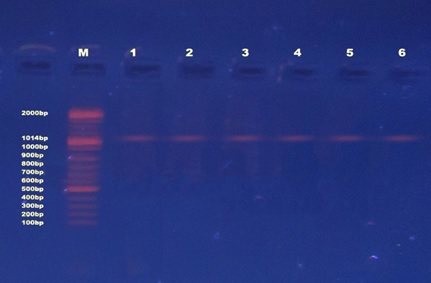Molecular identification of Capnocytophaga canimorsus in canine oral samples
Main Article Content
Abstract
Fifty oral swabs (25 from Anbar and 25 from Salah Aldein) were collected from dogs of different ages, global strains, and different genders. Capnocytophaga canimorsus was diagnosed by PCR using the designed genes. The collected samples were first cultured on nutrient, blood, and MacConkey agar. Then the colonies were subcultured on brain heart infusion and blood agar supplemented with 2.5μg/ml trimethoprim and 2.5μg/ml amphotericin B. Gram staining and biochemical tests including catalase, oxidase and fermentation of glucose, maltose, sucrose, sorbitol and mannitol were performed. The isolate identification results showed that 22 strains (9 from Anbar and 13 from Salah Aldein) were likely Capnocytophaga spp. Action was taken. These putative Capnocytophaga spp. isolates. The PCR test was performed, and the results showed that 14 (6 from Anbar and eight from Salah Aldein) isolates were positive for the designed gene. In addition, the percentage results of C. canimorsus showed that 24% were from Anbar and 32% from Salah Aldein, while the other 36 dogs were negative for C. canimorsus, of which 19 (76%) were from Anbar, and 17 (68%) were from Salah Aldein. In conclusion, dogs are an essential carrier for C. canimorsus in Iraq.
Article Details

This work is licensed under a Creative Commons Attribution 4.0 International License.
